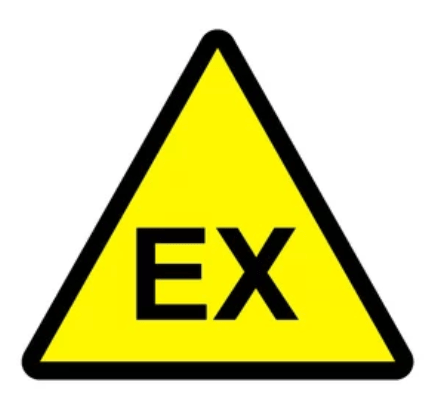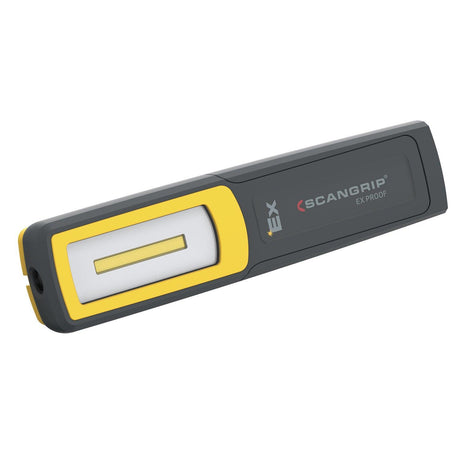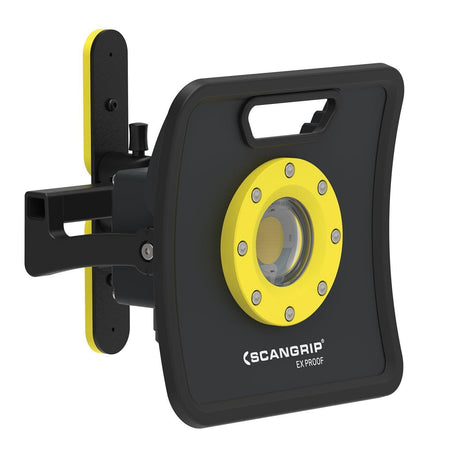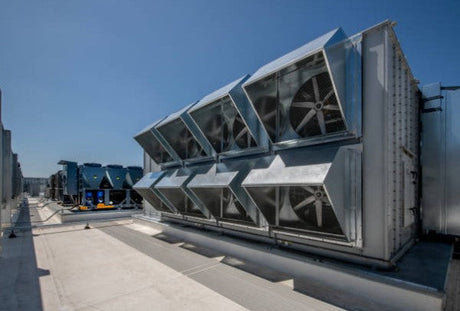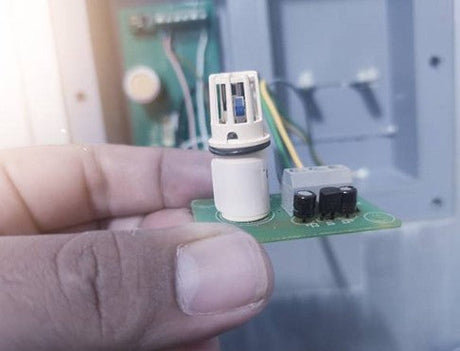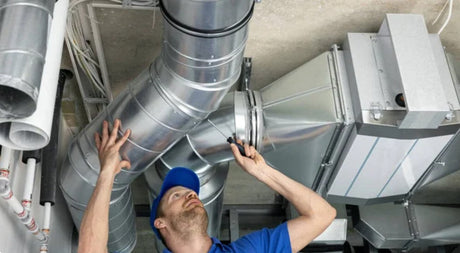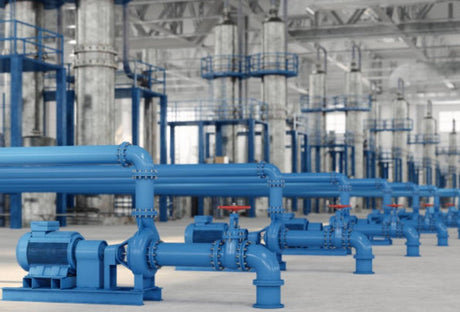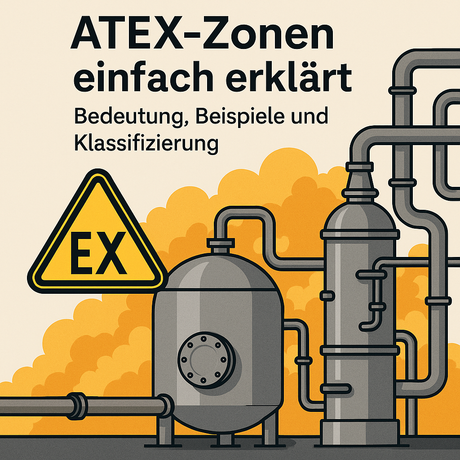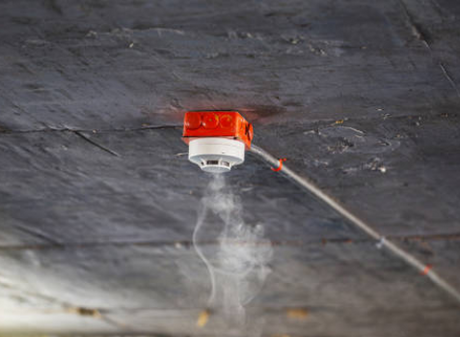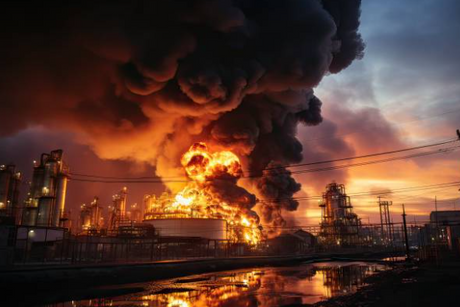Security in industrial companies is of crucial importance, especially in areas with potentially explosive atmospheres. Ex-zones are special areas in which there is an increased risk of explosions. The correct handling of these zones is essential to avoid accidents and to ensure the safety of people and facilities. In this guide you will learn everything important about ex-zones, their classification and relevant ATEX guidelines.
The ATEX guidelines (Atmosphere Explosion) are the most important regulations in Europe to protect against explosive atmospheres. They set requirements for materials, equipment and working methods to ensure security in ex-zones. In ATEX zones, special safety precautions must be taken to minimize the risk of explosions from dangerous atmospheres.
In this guide you will learn everything essential for ex-zones, their classification and the relevant ATEX guidelines in order to optimally design the handling of explosive areas.
Requirements for explosions
Before we turn to the ex-zones, it is important to understand which prerequisites for explosions are required. An explosion can only occur under certain conditions. The following elements must be present at the same time:
- Flammable fabrics that can form an explosive atmosphere with air
- Air or oxygen
- Ignition source
One explosive atmosphere arises when air or oxygen mix with flammable gases, steaming, nebuling or dusting - and that under normal atmospheric conditions. If such a mixture is ignited, the burn spreads out to the entire still unbroken material.
An area that is potentially endangered is considered explosive if an explosive atmosphere can occur there. In order for an explosion to occur, the concentration of the combustible fabric must be in the air within certain values, which are referred to as the "explosion area". This area varies greatly depending on the respective combustible fabric.
The limits of the explosion area are defined by the lower explosion limit and the upper explosion limit. An explosion can only take place if the concentration of the combustible material is within these two limit values. For example, an explosive atmosphere can arise inside a partially filled petrol tank, while a completely filled tank is not a risk, since the upper concentration limit is exceeded here.
In commercial and industrial applications, different Ignition sources occur, including:
- Hot surfaces: These include, for example, radiators, hot plates, boiler and overheated machine parts.
- Flames and hot gases: The typical ignition sources include Bunsen burners, candles, ignition wood and open heating systems with flames.
- Mechanically produced spark: These arise from friction or blow - for example when a hammer meets metal or when grinding materials.
- Electrical systems: When opening and closing electrical circuits, such as electric motors, ignition sources can occur.
- Static electricity: These are discharge sparks that arise when charged parts are unloaded by touch due to different voltage levels.
What are ex-zones?
Ex-zones are specific areas in which an explosive atmosphere can occur and which therefore require special safety precautions. In order to regulate the use of electrical devices in these zones, electrical equipment that is designed for use in explosion atmospheres are divided into two main equipment groups:
- Group I: This includes electrical equipment that is used in underground areas with the risk of mine gases.
- Group II: This group refers to electrical equipment that is used in all other explosive environments. Within this group there is another subdivision into three categories that are based on the specific hazards.
Devices of the Device Group II are also provided with a letter that marks the condition of the atmosphere:
- G-for areas in which there are explosive gas, steam, fog, air mixtures
- D - for areas in which dust with air can form an explosive atmosphere
The demarcation in device groups serves to classify electrical equipment according to the risk that you start in explosive areas. While the device groups define the type and safety precautions of the devices, ex-zones are specific areas in which such dangers can occur.
Ex-zones are classified based on the probability and duration of the occurrence of an explosive atmosphere, for example in ex-zone 0, ex-zone 1 and ex-zone 2. These zones provide detailed information about how and where certain devices can be used, and thus play a decisive role in dealing with electrical equipment in explosive environments.
The main difference between ex-areas and normal areas is the probability of the ignition. There is a higher risk in ex-areas, while in normal areas the risk of explosion does not exist or is very minimized. Ex-protected devices are essential for safe operation in ex-zones to minimize the risk of explosions. One Ex-protected lamp For example, safe lighting in ex-zones and is essential for explosion protection in endangered areas.
Overview of the different ex-zones
Ex-zones are classified based on the probability and duration of the occurrence of an explosive atmosphere. The division is typically in the following zones:
- Ex Zone 0: Areas in which there is an explosive atmosphere for a long time or over a long period of time.
- Ex Zone 1: Areas in which an explosive atmosphere occasionally occurs.
- Ex Zone 2: Areas in which an explosive atmosphere occurs rarely or at short notice.
In addition, there are zones that are specifically intended for dust -forming environments:
- Ex Zone 20: Areas in which there is an explosive dust atmosphere for a long time.
- Ex Zone 21: Areas in which an explosive dust atmosphere occurs occasionally.
- Ex Zone 22: Areas in which an explosive dust atmosphere occurs rarely or at short notice.
These zones provide detailed information about how and where certain devices can be used and thus play a crucial role in dealing with electrical equipment in explosive environments. The Humiguard® HT130 - Moisture Transmitter for ATEX zones For example, enables reliable moisture measurements and can easily be integrated into existing systems.
The classification of the ex-zones is crucial for the security systems that are used in these areas. The ATEX operating directive 1999/92/EG stipulates that every company in the context of the prescribed risk assessment Create explosion protection document must be divided into zones in the explosion.
While Ex-zone 0 extremely strict security requirements apply in Ex-zone 1 High requirements, but a little less intense. In Ex-zone 2 the requirements are less rigid, since the risk of an explosive atmosphere is low.
Similar rules result in dust -forming zones: Ex-zone 20 and Ex-zone 21 require high to moderate security standards, while in Ex-zone 22 Less strict guidelines apply because an explosive dust atmosphere rarely occurs.
It is important to note that the terms "frequently", "occasionally" and "rarely" have no clear definitions. In the relevant standards, specific figures are missing. However, the following has been established in specialist circles:
- “Often” refers to more than 50 percent of the operating time.
- "Occasionally" describes situations that can occur at irregular intervals, such as during ventilation or trial withdrawals, and usually corresponds to 1 to 10 percent of the operating time.
In practice, you should assign the higher ex-zone if in doubt.

